Incorporating restaurant design elements into your home can infuse a dramatic flair and unique charm to your living space.
Creating an inviting, stylish atmosphere is crucial for any restaurant’s success. In this article, you’ll find a plethora of innovative design ideas to transform your restaurant into an aesthetically pleasing space that customers will love.
From color schemes and furniture selection to lighting fixtures and wall decor, every element will be discussed in detail. Whether you’re aiming for a modern, rustic, or vintage vibe, these tips will provide the inspiration you need to create a unique dining environment.
Stay tuned for a comprehensive guide to restaurant design.
Open-kitchen Concept
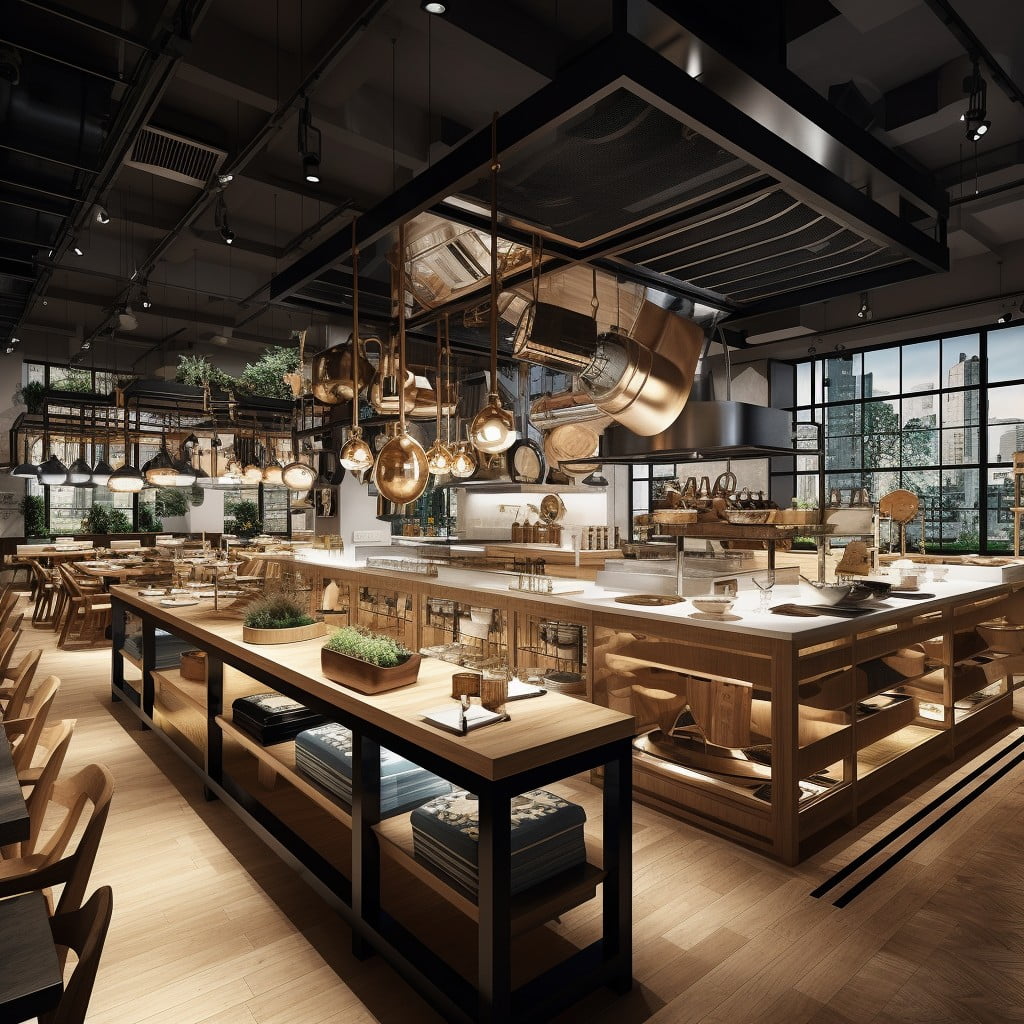
An open-kitchen concept holds a central place in many modern restaurant designs. It allows patrons to experience the chef’s art in action.
Some key points about this design concept are:
- Transparency: With this layout, customers can see how the food is prepared and handled. It showcases the cleanliness and dedication to high-quality food preparation.
- Engagement: It serves as a form of entertainment as customers experience the hustle and bustle, the flair of the chef’s techniques, and the transformation of raw ingredients to a final exquisite dish.
- Space management: This concept helps utilize the available area efficiently, making the establishment seem larger and more welcoming.
- Aesthetics: For a visually stunning impact, consider designer cookware, custom chef’s attire, and attractive kitchen equipment.
Remember, the right lighting can add an extra layer of coziness and ensure the kitchen becomes a focal point of your restaurant.
Rooftop Dining Area
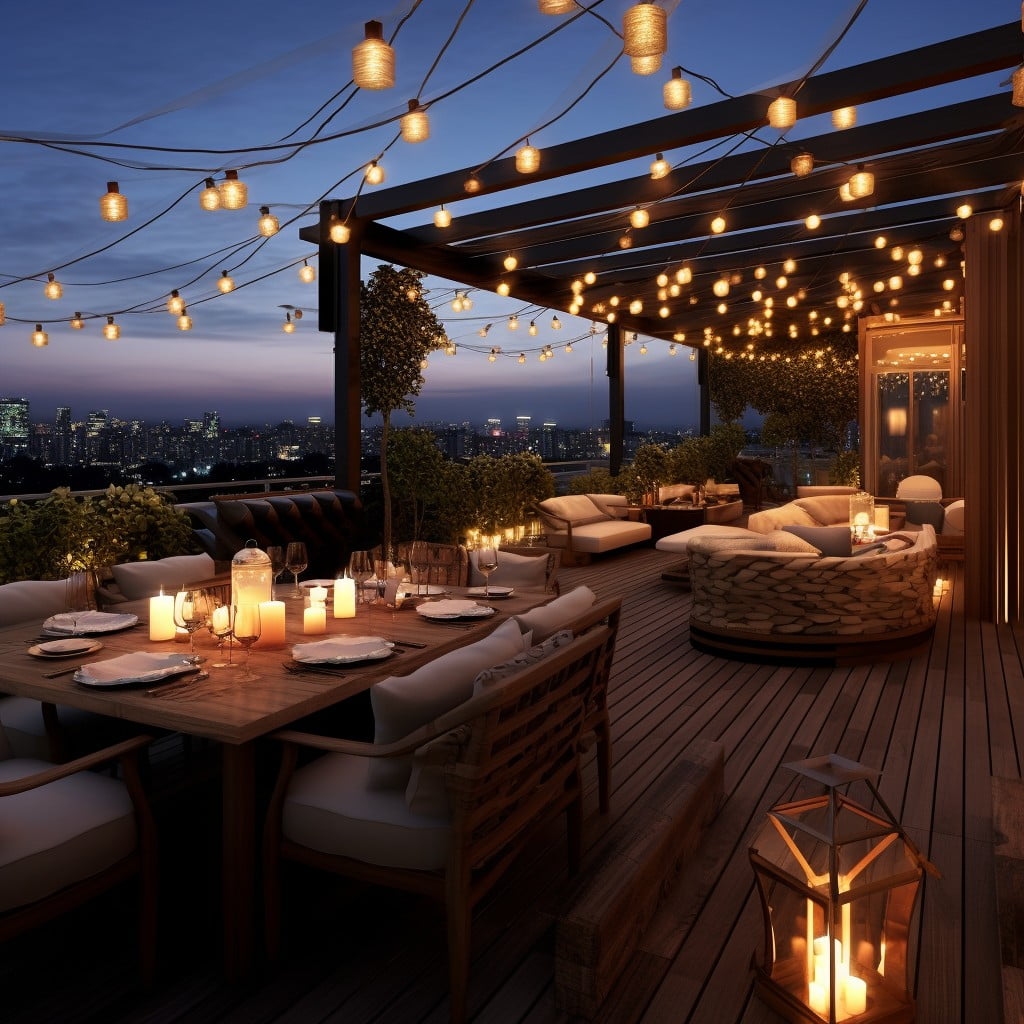
Offering an aerial spectacle of the surroundings, this model leverages the architecture and view of the building. Critical factors to consider include weather-proof furniture, a well-thought-out layout to capitalize on the view, and proper safety measures, especially for high-rise structures.
- Unobstructed View: A strategic layout that offers every customer a panoramic view.
- Weather-resistant Furniture: Furniture should be strong, durable, and able to withstand various weather conditions. Using materials like teak, plastic, metal, or synthetic resin is recommended.
- Safety Measures: Include safety rails and windbreaker walls to protect patrons.
- Appropriate Lighting: Soft, ambient lighting best complements the natural light, offering an excellent dining experience during day and night.
- Outdoor Kitchen: For optimal efficiency, consider installing a mini outdoor kitchen to handle the rooftop orders.
- Canopies and Shades: Providing shade is essential to protect guests from extreme weather conditions.
By paying attention to these points, the space can be transformed into an enticing dining spot under the clear sky.
Waterfall Wall Feature
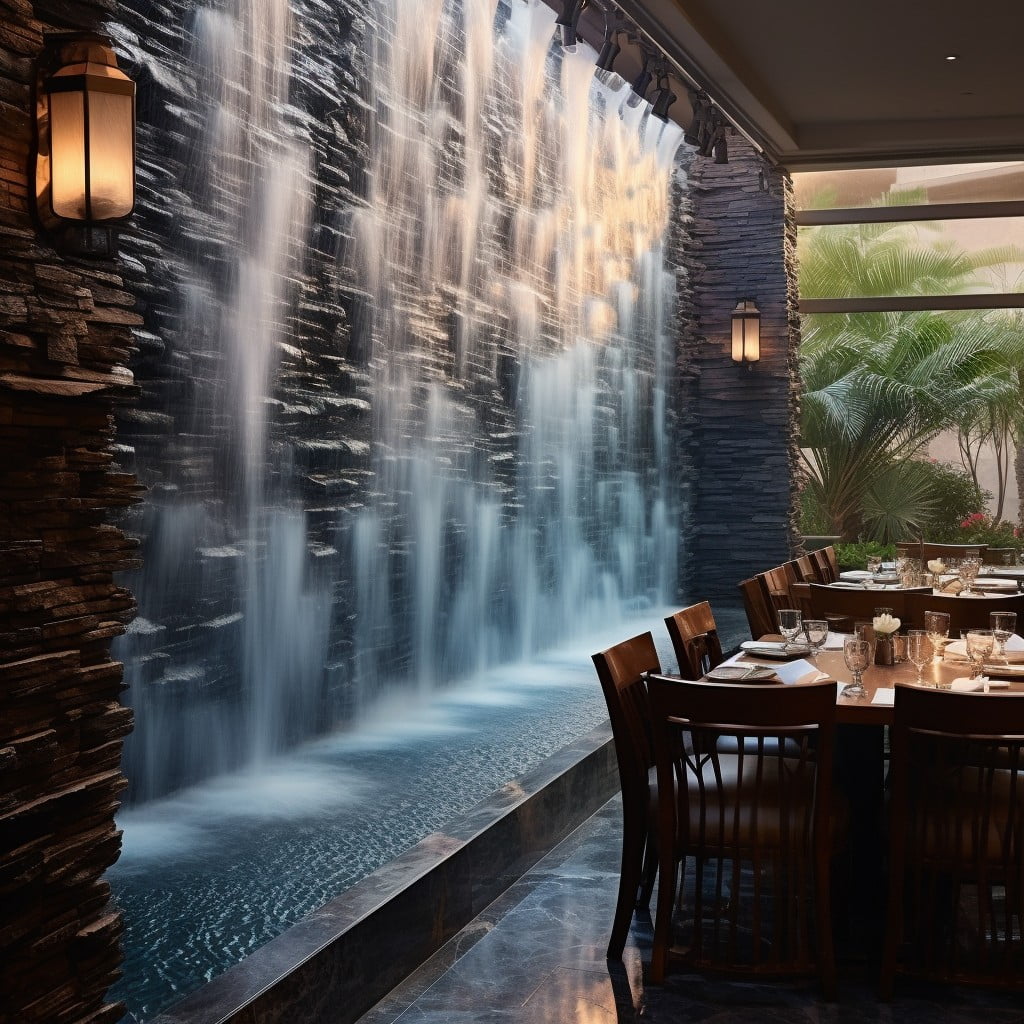
When executed properly, a waterfall wall can instill a sense of tranquility and peacefulness, turning a regular dining experience into something truly special. It’s the constant flow of water that creates an overwhelming sensory experience.
Key points to consider for a waterfall wall installation are:
- Design and Material: Consider using materials such as glass, stone or metal. Integration of LED light effects can also make the wall more captivating.
- Placement: Ensure appropriate placement that does not hinder staff movement and serve as a distraction for diners.
- Maintenance: Regular cleaning and water conditioning is essential to prevent build-up and foul odor.
- Sound Management: The cascading water will create noise, so balance it with the provided space and soundproofing measures.
- Safety Measures: Incorporate safety measures such as a well-structured stand, splash guards, and resistance to slipping in the surrounding floor space.
This dynamic yet soothing water feature will certainly make a restaurant stand out by offering more than just food, but a complete dining experience.
Vintage Aesthetic

Draw inspiration from the 19th and early 20th centuries for this design. Distinguish your space with antique touches, weathered wood and distressed furniture. A careful play with the color scheme, choosing warm, muted shades, can further reinforce the vintage aura.
Key points:
- Antique collections: Utilize old-world items such as retro memorabilia, vinyl records, vintage maps, and mounted animal heads.
- Furniture: Opt for the comfort and charm of plush seats, distressed wooden tables, and chandeliers to evoke nostalgia.
- Wall Art: Sepia-toned images or old photographs can add character and depth.
- Color palette: Experiment with subdued tones like cream, light blue, and sage for a mellow and inviting charm.
- Bar Design: Pull together the look by incorporating an old-fashioned bar with brass fittings and high stool seating.
- Tableware: Use bone china dishes, silver cutlery, and crystal glassware for authenticity and visual appeal.
Garden Patio Dining
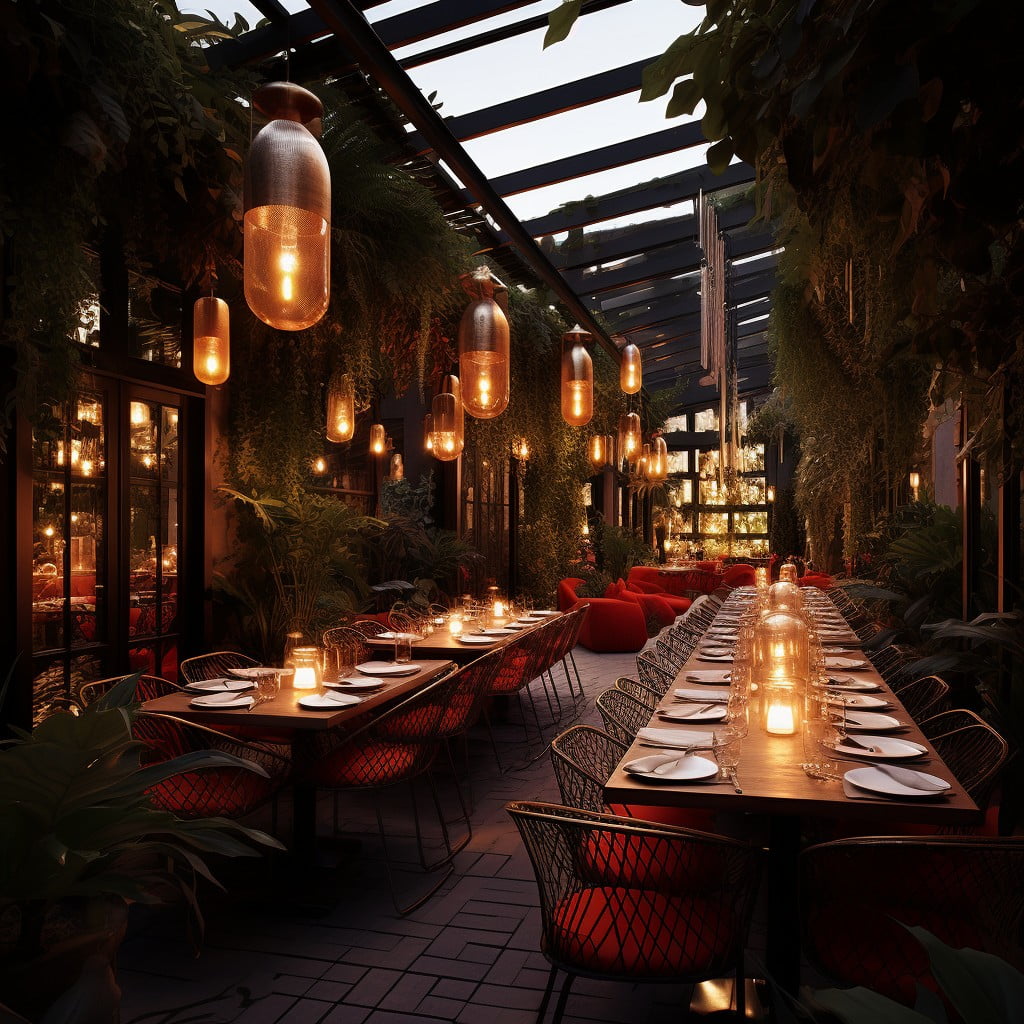
Creating this type of space involves several key points.
1. Landscaping: A balanced blend of greenery, blooms, and hardscapes provide a serene setting.
2. Furniture: Depending on the theme, you can opt for teak, rattan, or wrought-iron furniture.
3. Lighting: Ambient lighting can create a relaxed atmosphere — think string lights, lanterns, or solar lights spread throughout the greenery.
4. Features: Include elements like a water feature, an outdoor fireplace, or a grill to enhance the dining experience.
5. Protection: Canopies or pergolas can ensure uninterrupted dining amidst varying weather conditions.
An aptly executed garden patio dining space can truly be an oasis, offering patrons a chance to dine amidst nature while in the heart of the city.
Industrial Chic Design

Industrial chic design is ideal for bringing an urban downtown feel right into the restaurant, emphasizing natural beauty amidst utilitarian surfaces. Here are key distinctive features to create this aesthetic:
- Exposed brick walls for a raw and vintage look.
- High ceilings revealing ductwork, promoting an industrial vibe.
- Utilization of metal elements: steel, iron, copper, for furnishings or decor, often combined with wood.
- Use of factory or warehouse inspired furniture.
- Large, open floor plans reminiscent of loft-style living.
- Statement pieces such as vintage industrial lighting or artworks.
- Minimalistic color palette with primary usage of neutrals.
With these elements, an industrial chic style can create an informal, enticing dining atmosphere with its combination of rough textures and smooth finishes. Both functional and aesthetic, this style inevitably offers strong visual impact, without sacrificing comfort.
Interactive Touch Screen Menu Tables
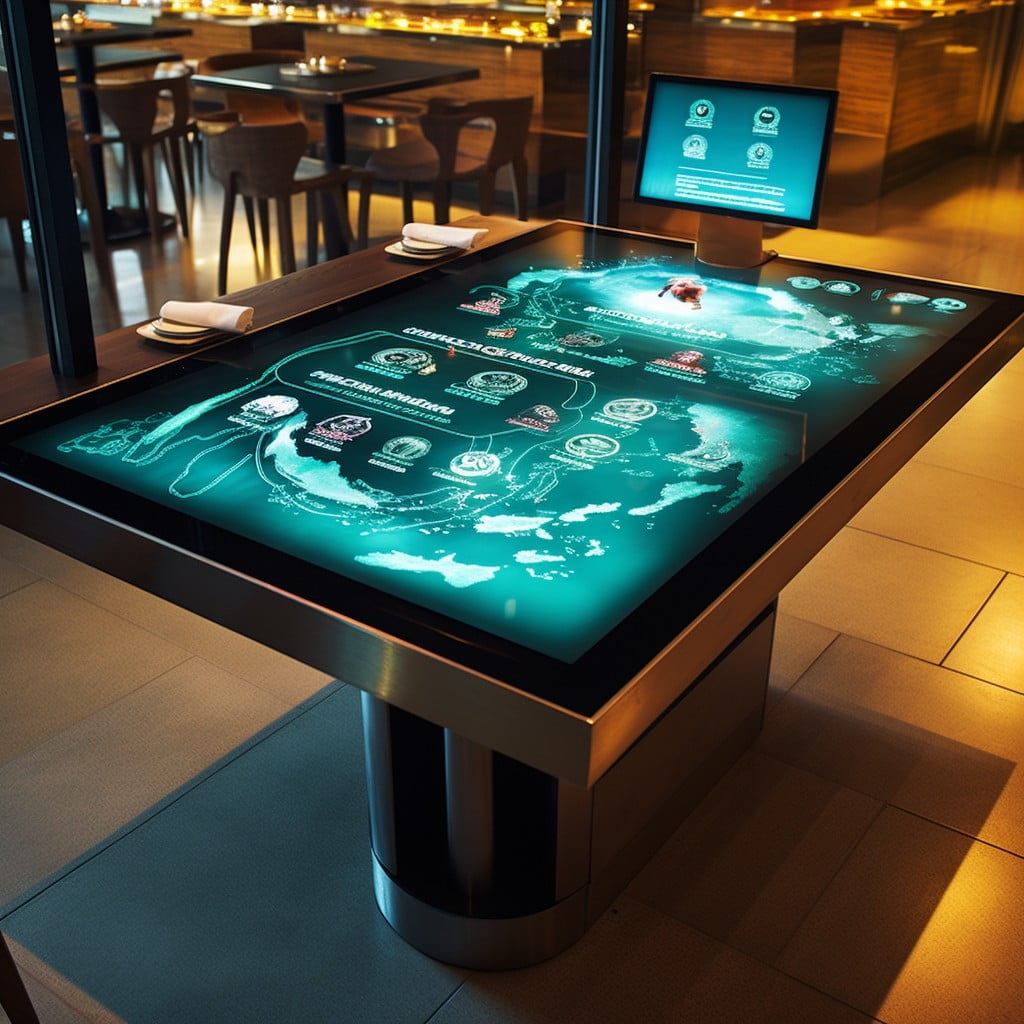
Utilizing technology can truly elevate your restaurant’s aesthetic and functionality. Touch screen tables offer an interactive and memorable experience for diners. Here are some unique ways to incorporate this feature:
- Customizable Menu: Offers an intuitive interface for customers to effortlessly browse through a digitized menu, saving time and improving order accuracy.
- Virtual Tablecloth: Let diners change the virtual tablecloth with just a tap, aligning the design with the current vibe or theme.
- Entertainment Options: Integrated games, fun facts about your cuisine or a photo gallery from your restaurant’s events can delight the customers while they wait for their meals.
- Order Visualizer: High-definition photos of the dishes available, accompanied by a detailed description.
- Interactive Waiter Call: When in need, diners can use the call feature, avoiding the classic wait and hand wave for the waiter’s attention.
Interactive touch screen tables transform the dining scenario into an engaging, unique experience.
Rotating Panoramic View

To create a rotating panoramic view, you need strategic planning and a hefty budget, but the result is undoubtedly worth it. The key factors to consider are:
- Platform: To start, plan a rotating floor or a section of your restaurant. This can be made of reinforced glass or high-quality wood. Mechanically engineered, this platform will revolve slowly, providing guests with changing views.
- View: Choose an area with stunning surroundings. A cityscape, shoreline, or a scenic natural landscape can be exceptional choices. The panoramic view outside should be stimulating and exciting.
- Windows: Incorporate ceiling-to-floor windows for optimal exposure to the outside view. The expansive glass panes will act as an appealing feature in your restaurant and intensify the effect of the rotating platform.
- Interior Design: Keep the decor minimalistic and sophisticated to let the view be the spotlight. Neutral colors, elegant lighting, and luxury materials can add more charm without shifting attention from the panoramic view.
By incorporating these elements, your restaurant can offer a unique dining experience that is always changing and never dull. Remember, the main attraction is the panorama, so the rotation speed should be slow enough to let the customers enjoy the view.
Underwater Themed Decor

Dive into a captivating under-the-sea atmosphere without getting wet! For this theme, focus on:
- Color Palette: Shades of blue, turquoise, and greens serve as a backdrop, representing the ocean, while brighter hues like corals, yellows, and pinks can accentuate smaller details.
- Wall Art: Consider large mural art of an aquatic landscape, including diverse marine life, or digitally printed wallpapers with subtle wave patterns.
- Lighting: Opt for dim, ambient lighting to mimic water’s diffusing effect. Tiffany glass lamps shaped like jellyfish or other sea creatures can lend a touch of elegance and novelty.
- Furniture and decor: Shape tables like shells or urchins. Clear acrylic chairs can resemble “air bubbles”. Incorporate seaweed-patterned textiles or cushions with sea creature prints.
- Aquariums: Large, built-in saltwater fish tanks don’t just serve as eye-catching decor but also double as live, moving pieces of artwork. Ensure they are well-maintained to maintain vibrancy.
- Sounds: Install a sound system playing soft marine sounds, such as waves or whale songs, to fully immerse customers in the aquatic environment.
Japanese Zen Garden Style
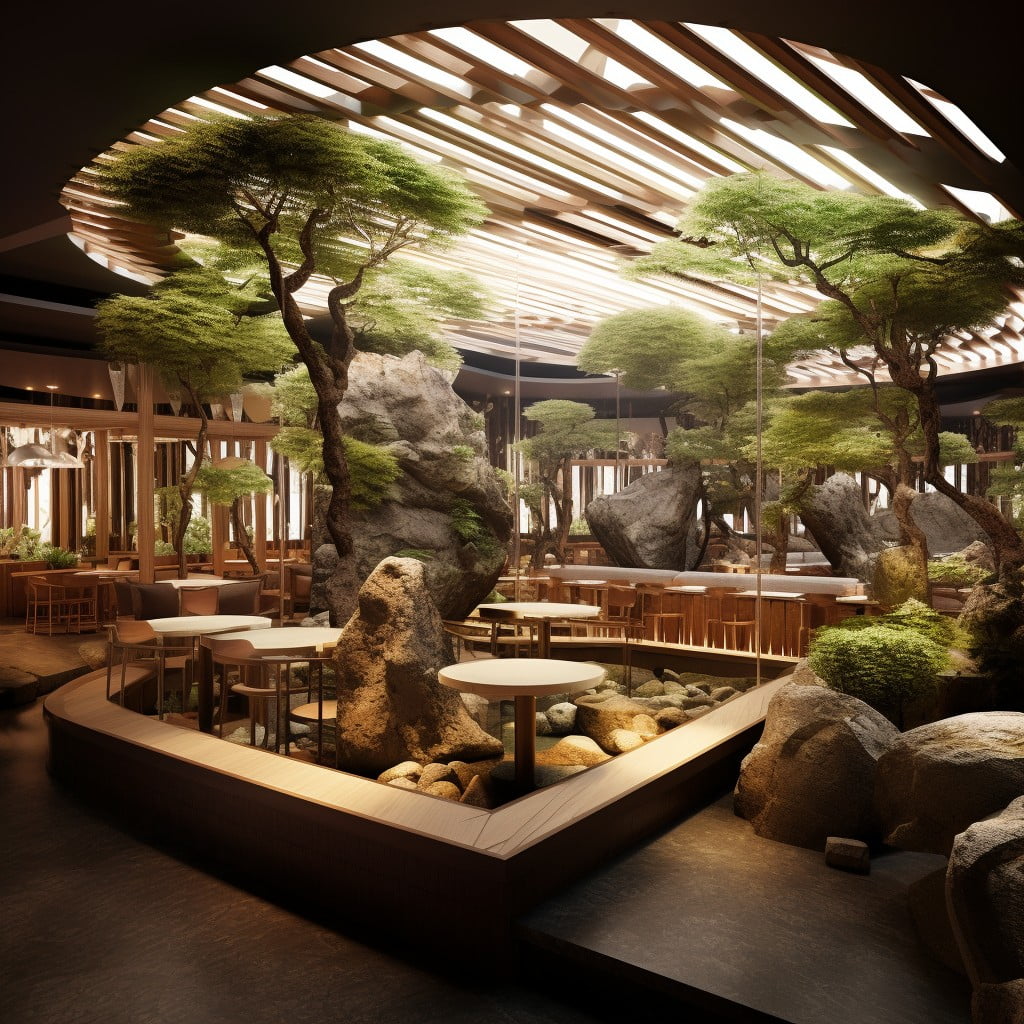
Converting a dining quarter into an oasis of tranquility, this style draws its roots from the philosophy of achieving inner peace. A characteristic trait is the elegant minimalism which harmonizes simplicity with nature.
Here are the crucial elements:
- Natural Materials: Use wood, bamboo, and stone to create furnishings and wall partitions, replicating the feeling of a natural environment.
- Water Features: Incorporate elements such as miniature waterfalls or koi ponds, as water is a key symbol of purity in Japanese gardens.
- Plants: Bamboo, bonsai, cherry blossom, and azalea to recreate a traditional zen garden as close as possible.
- Sand and Rocks: A ‘dry landscape’ also known as “Karesansui” is a distinct feature. It uses stones to represent mountains and sand to depict water. Raked sand patterns create the illusion of waves.
- Illumination: Natural lighting complemented with strategically placed lantern-style fixtures will evoke a peaceful ambience.
- Furnishing: Low tables and cushion seating on tatami mats are common to enhance the simple yet functional space.
- Space and Balance: Keeping in line with the Zen concept, the layout should not feel cluttered. Each element must seamlessly blend with each other, achieving a sense of visual harmony and balance. Minimalism is key.
Incorporating these elements successfully in a restaurant setting facilitates an environment of serenity, offering a unique dining experience that caters to the visual aesthetic and the culinary palette.
Winery Inspired Design

Begin with adopting a rustic charm that showcases an old-world winery; think vineyard murals, oakwood furnishings, and wine barrel tables. Next, incorporate wine displays, possibly a wall showcasing an impressive wine collection — this could even double as a separator between spaces. Quaint lightings using lantern-style or iron-wrought chandeliers add to the ambiance.
The color scheme plays a pivotal role, choose earthy tones like shades of reds, browns, and beige to reflect the rich heritage of wine-making. Special menu boards featuring wine pairings can enhance the dining experience. Vine-related artwork and vintage wine accessories like corkscrews as part of the decor provide authentic touches.
So, key points for a winery-inspired design are:
- Rustic character with oakwood furnishings.
- Wine display or wall.
- Lantern-style or iron-wrought lighting.
- Earth-toned color scheme.
- Wine pairing menus.
- Vine-related artwork and vintage accessories.
Farm-to-table Aesthetics

Capitalizing on its inherent charm and authenticity, the farm-to-table aesthetic emphasizes a connection to the earthy, rustic roots of the food served. This design draws on a tranquil, organic feeling, often incorporating elements like distressed wood, exposed brick, pallet furniture, and galvanized metal in its decor. An abundance of greenery in the form of in-house herb gardens or vine-clad walls adds to the freshness and vibrancy.
Key points to illustrate the concept:
- Natural materials: Wood, brick, and stone are the primary materials used, offering an earthy, rustic charm.
- Green elements: Indoor plants, vertical gardens, or even small vegetable patches enhance the connection to nature.
- Open layout: This design often includes an open-view kitchen, emphasizing transparency in food preparation.
- Industrial elements: Galvanized metal or wrought iron furniture offers a balance, giving it an industrial yet homely feel.
- Recycled materials: Use of repurposed items, like pallet furniture or mason jar lighting, reflects the sustainable ethos of the farm-to-table movement.
Exotic Tropical Theme
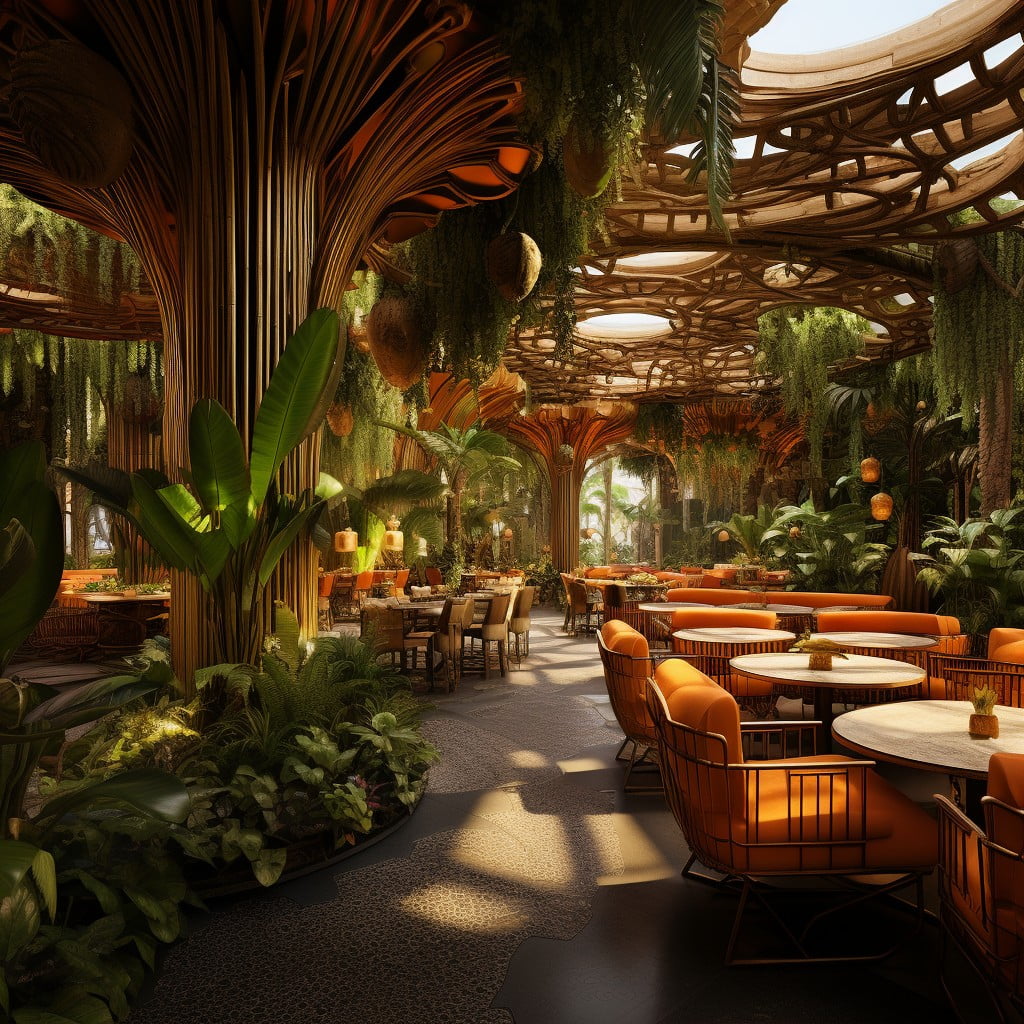
An exotic tropical-theme brings the vibrant energy of a beach vacation right inside your space. To pull off this look, consider the following elements:
1. Tropical Plants: One can hardly think about the tropics without lush greenery. Use plants like rubber plants, areca palms, or even monstera deliciosa, popularly known as the Swiss cheese plant, to introduce green shades and vivid textures in the interior.
2. Bright Colors: Tropical motifs often come along with bright and daring colors. Incorporate pops of teal, coral, or even vibrant yellows to capture the essence of the beach and ocean.
3. Natural Materials: Rattan and wicker furniture carry the natural essence of island life. Also, consider bamboo accents, shells, or even tropical wood types.
4. Artwork and Print: Opt for prints of tropical birds, palm leaves, or abstract beach scenes.
5. Lighting: To portray soft and mesmerizing sunset hues of the tropics, subtle and warm lighting is key. This can be achieved with woven lanterns or soft ambient lamps.
Remember, the secret to nailing the tropical theme is to stay casual and unpretentious, just like a vacation itself. A relaxed, laid-back vibe should encapsulate the space.
Retro Diner Style
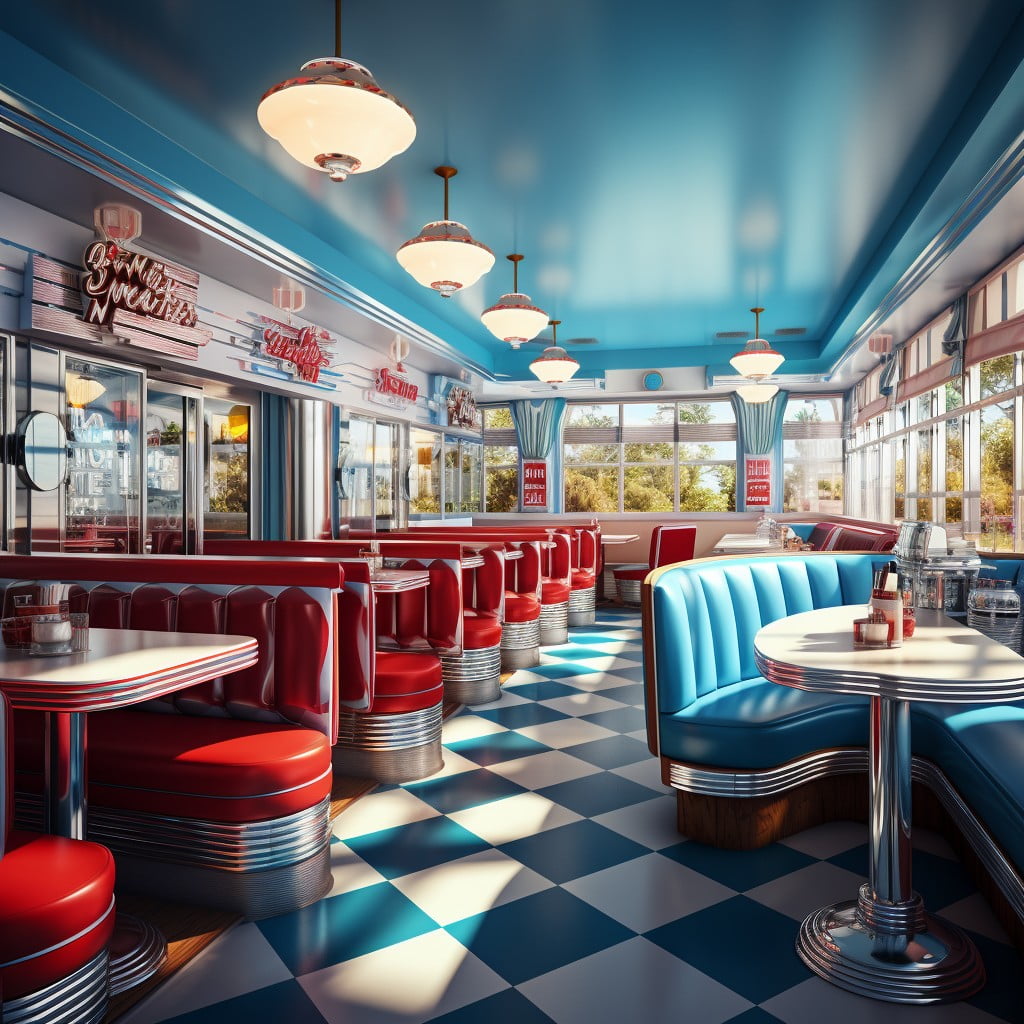
Harnessing a playful blend of nostalgia and Americana, this style finds its charm in chrome accents, checkered flooring, and vinyl booths. The color scheme typically leans towards punchy reds, blacks, whites, and chrome, painting a vivid reminder of yesteryear pleasures.
Identifying features of this distinctive style include:
- Neon lighting: Lights bearing catchy phrases add a vibrant pop while encouraging social media promotions.
- Jukebox: A staple in retro diners that offers both visual and auditory throwback.
- Vintage posters and memorabilia: These accessories serve to enhance the diner’s authenticity and provide an indulging talking point for guests.
- Open kitchen: This showcases the food preparation process, promoting transparency and interest.
Transform your space with these features to create a restaurant charged with vintage charm and a lively ambiance.
Food Truck Inside Layout
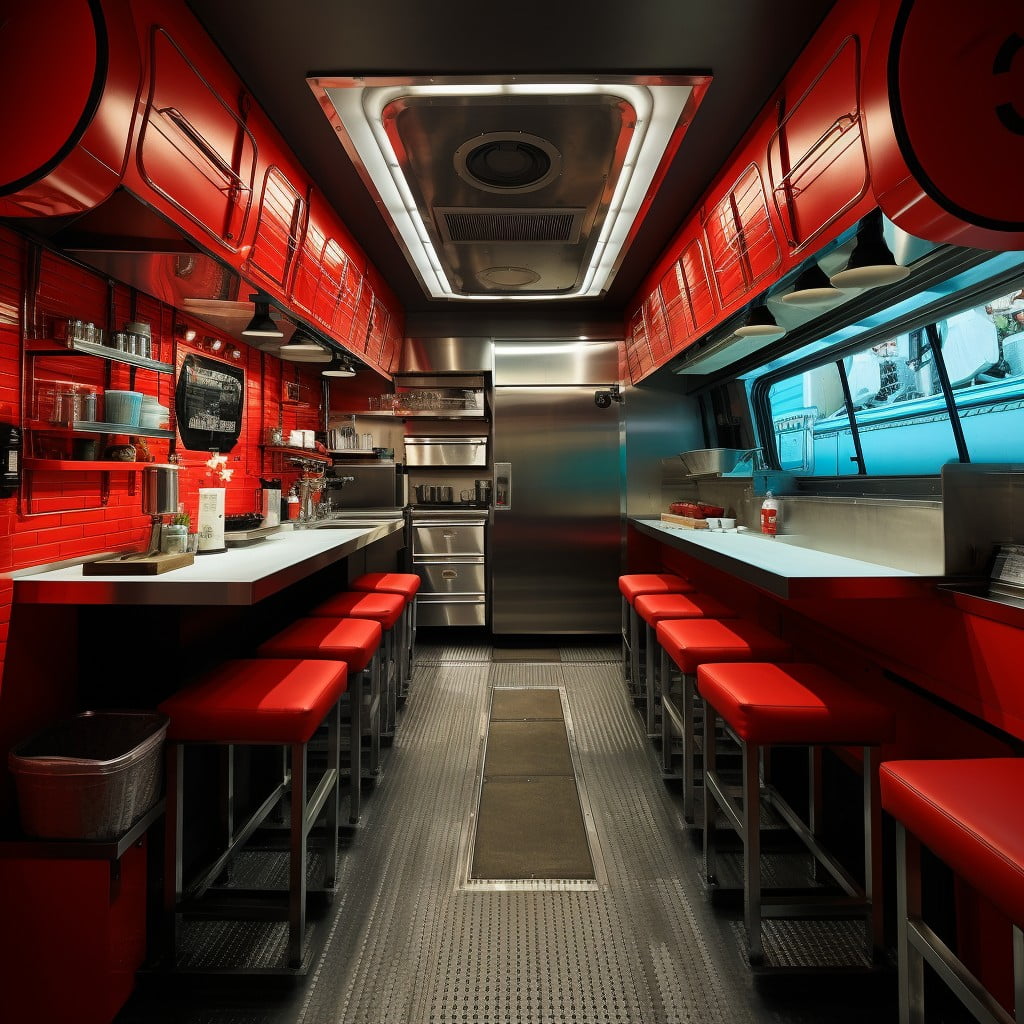
Blending your love of street food with a love of industrial-chic stylings? An integral wall built from a modified food truck is a unique, attention-grabbing focal point. This introduces an element of fun and spontaneity, while also emphasizing a laid-back, informal atmosphere.
Key Points:
- Authenticity: The truck can serve as a functioning kitchen, adding a raw authenticity that entices customers with a street food experience.
- Space Optimization: The truck’s service window functions as a counter – a clever use of space, especially in compact establishment areas.
- Theme Compliance: Artwork, symptoms, and signage from the food-truck world maintain the theme throughout the rest of the restaurant.
- Interaction: Chefs can interact directly with customers, personalizing their service, and offering an entirely unique experience.
- Industrial Appeal: The inclusion of raw materials, such as exposed bricks, metals, and concrete, enhances the industrial aesthetic.
Gothic Style Restaurant

Representing a rich, darkly romantic aesthetic, the Gothic style can lend an air of mystery and intrigue to a restaurant’s ambiance. Key elements often include vaulted ceilings and stained-glass windows, as well as the extensive use of materials such as dark woods, wrought iron, and luxurious fabrics.
Important aspects of a Gothic style restaurant may include:
- Architecture: Vaulted ceilings, arches, and gargoyles.
- Color schemes: Dark hues such as black, crimson, and purple.
- Lighting: Dim, soft light for an atmospheric effect.
- Furnishings: Ornate, vintage-styled furniture made of dark wood and heavy fabrics.
- Decorations: Gothic imagery such as candelabras, crosses, or gargoyles.
- Music: Melancholic or romantic tunes could further enhance the ambiance.
Remember, the aim is to create a suspenseful yet comfortingly intimate environment that entices diners with its dramatic allure. At the end of the day, balancing the bold designs with the need for functionality and comfort is necessary for the success of the restaurant.
Glass Floor With Underwater View
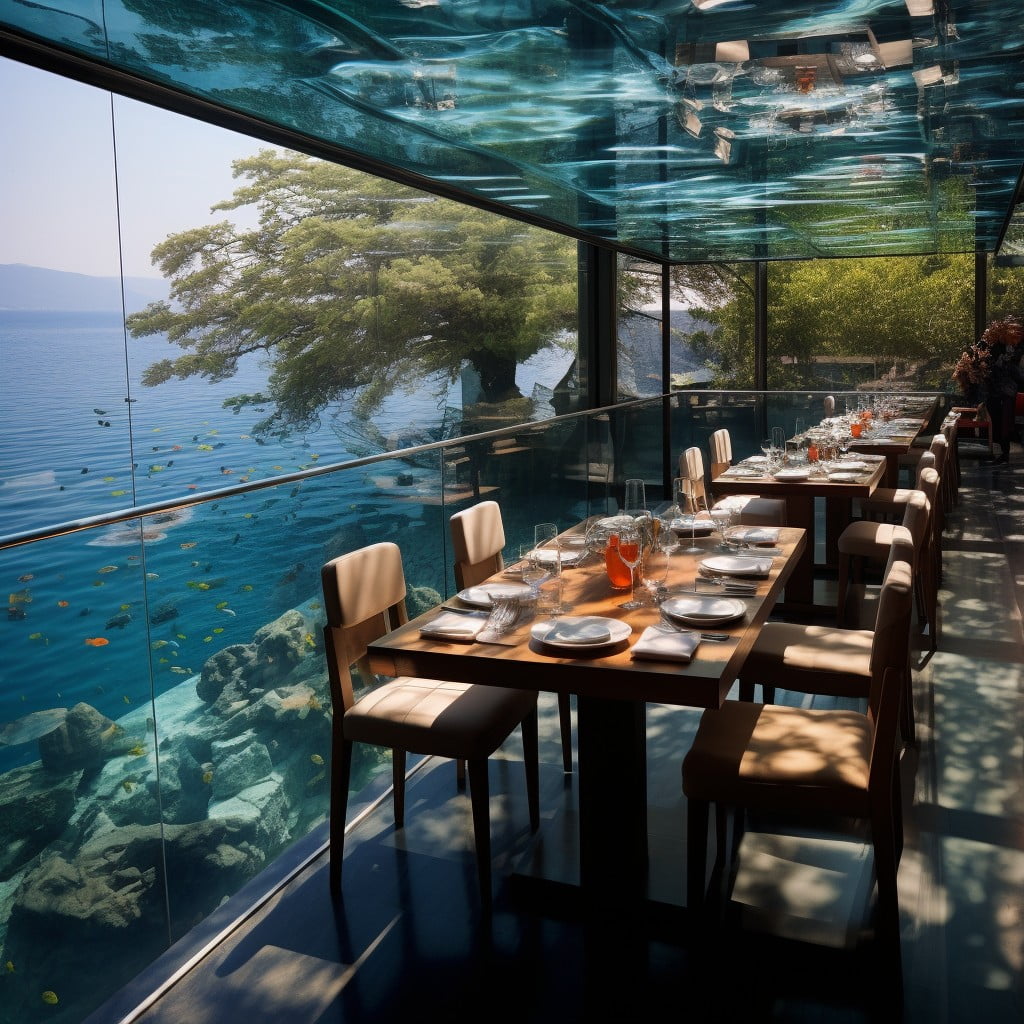
A stunning and magnificently designed feature; the glass floor provides guests with a glimpse into an underwater world filled with an array of beautiful marine life. The surreal experience of feasting while watching fishes swim beneath adds a magical and luxurious touch to dining.
Key Points:
- Location: Ideally situated waterside or on reclaimed water bodies to allow for a natural ecosystem beneath the dining area.
- Material: Specially adjusted strengthened glass for safety and clear visibility into the aquatic life below.
- Care: Regular marine maintenance for cleanliness and to ensure the wellbeing of aquatic life.
- Lighting: Special underwater illumination techniques to highlight the diverse marine life.
- Theme: Cohesive restaurant design and menu offerings to match the underwater appeal.
Achieving this luxurious design is a feat that requires careful planning, engineering, and interior design expertise, but the mesmerizing results can be truly worth the effort. This distinctive design fosters unforgettable dining experiences, highlighting not only the dishes served but also the breathtaking views of the aquatic life beneath.
Reflective Mirrored Interior

Utilizing reflective mirrored interiors can create an illusion of space, making even the smallest restaurant seem larger and more spacious. More than just a visual enhancement, the mirror panels can also reflect light around the room, giving the space a brighter and more energetic vibe.
Key points to consider when adopting this concept include:
- Placement: Mirrors should be strategically placed to avoid overwhelming diners and to effectively amplify the room’s dimensions and lightning.
- Size: Large mirrors generally create a greater impact, but a collection of smaller mirrors arranged artistically can also be a unique eye-catcher.
- Frame design: The frame design can be minimalist or intricate depending on the overall restaurant theme. However, ensuring that the frame complements the existing decor is crucial for aesthetic consistency.
- Safety: Mirrors should be securely fastened, and safety-backed mirrors are especially recommended in public spaces.
- Cleaning: Given that mirrors are prone to fingerprints and smudges, a regular cleaning schedule is essential to maintain the mirror’s reflective qualities.
Sports Bar Theme
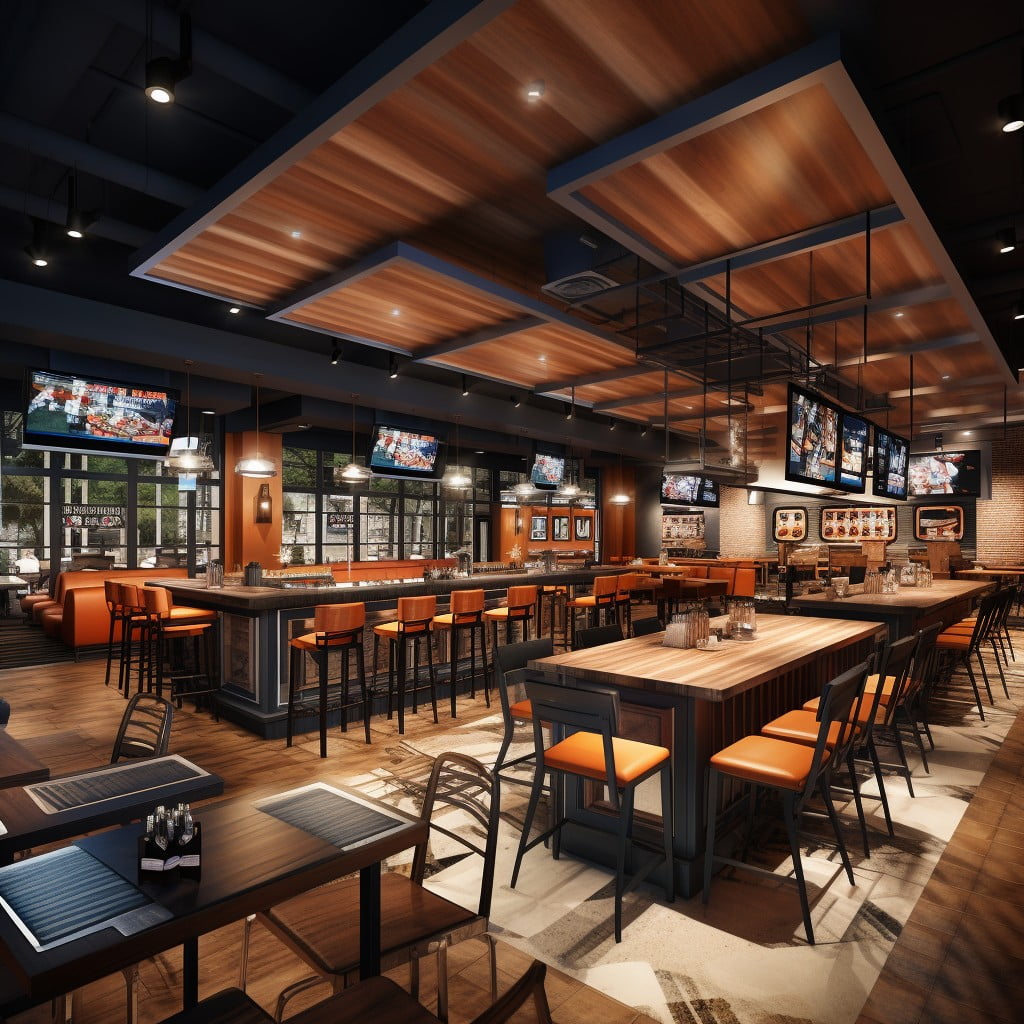
A sports bar theme enables the recreation of the invigorating atmosphere of a live match. The key elements that make this theme lively and engaging include:
1. Memorable Memorabilia: Incorporation of sports artifacts such as signed jerseys, historic equipment, and team flags accentuates the sports bar ambiance.
2. Thematic Colors: Designing the interiors with colors representing popular local sports teams helps boost the spirit.
3. Big Screen TVs: Crucial for broadcasting games, they should be strategically placed so every patron can comfortably watch.
4. Bar Layout: Should resemble a stadium with a central viewing area.
5. Sports-Themed Menu: Offers a selection of game day favorites like chicken wings, burgers, and beers.
6. Interactive Games: Pool tables, dart boards, or even interactive digital games increase customer engagement.
7. Comfortable Seating: Cozy, ample seating is essential to ensure guests stay longer and enjoy their experience.
Restaurant With Book Library Theme
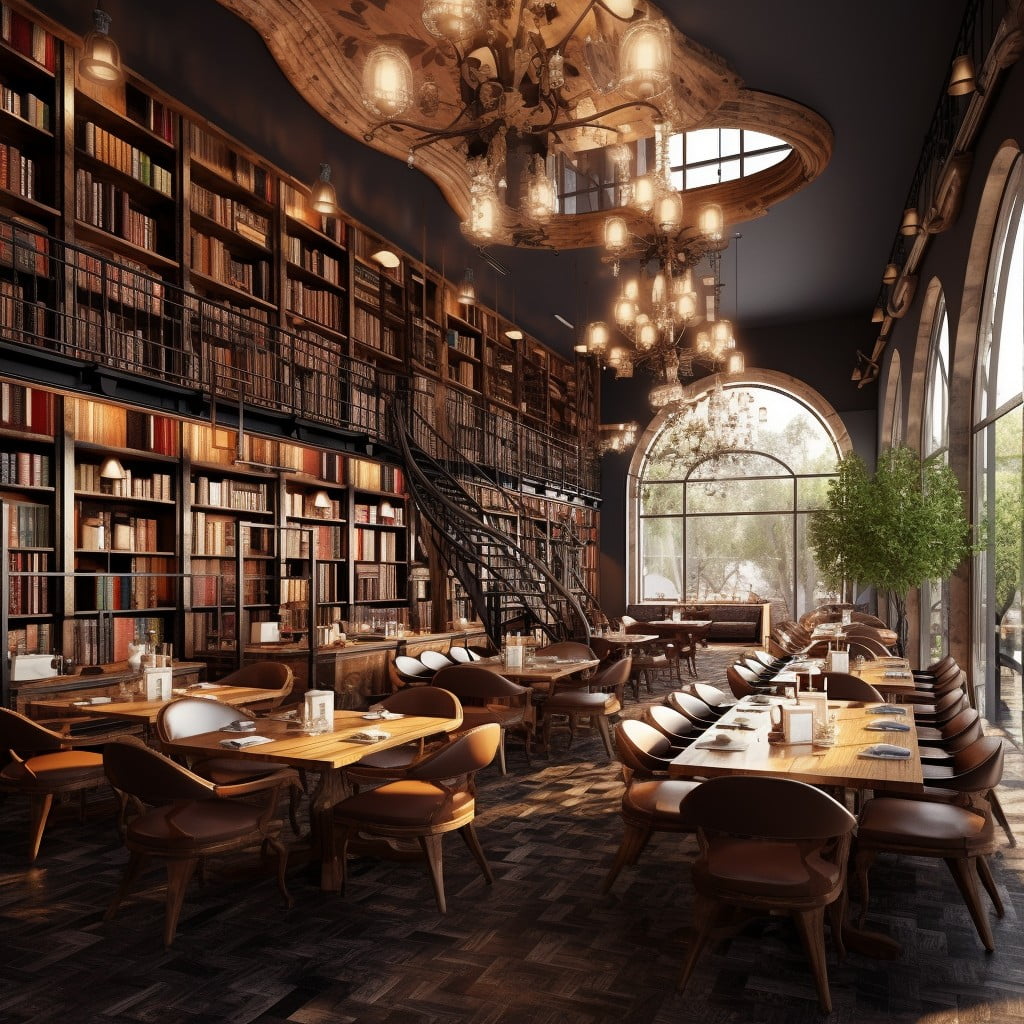
With the resurgence of printed books, having them in restaurants merges the joy of reading with dining. This theme marries simplicity with sophistication, offering diners a unique experience that feeds both body and mind.
The Key Elements:
- 1. Bookshelves: Wall-to-wall or freestanding bookshelves filled with a variety of genres appeal to wide-ranging tastes. These serve as both decoration and an engaging library for diners.
- 2. Reading Lights: Soft, individually adjustable lighting provides a cozy atmosphere ideal for immersing oneself into a literary world while enjoying a meal.
- 3. Comfortable Seating: Plush armchairs or sofas, in addition to standard dining chairs, facilitate comfort for extended reading times.
- 4. Hushed Ambiance: Acoustics should be controlled to maintain a noise level conducive to reading.
- 5. Book-related Décor: Artistic book covers, quotes on walls, or book-themed table centerpieces can add a whimsical touch.
- 6. Curation: Regular rotation of books will keep the content fresh and engaging for repeat customers.
By blending gastronomy and literature, this theme can attract a diverse clientele – book lovers, foodies, or those seeking a tranquil spot amidst the bustling city life.
Continue exploring:




